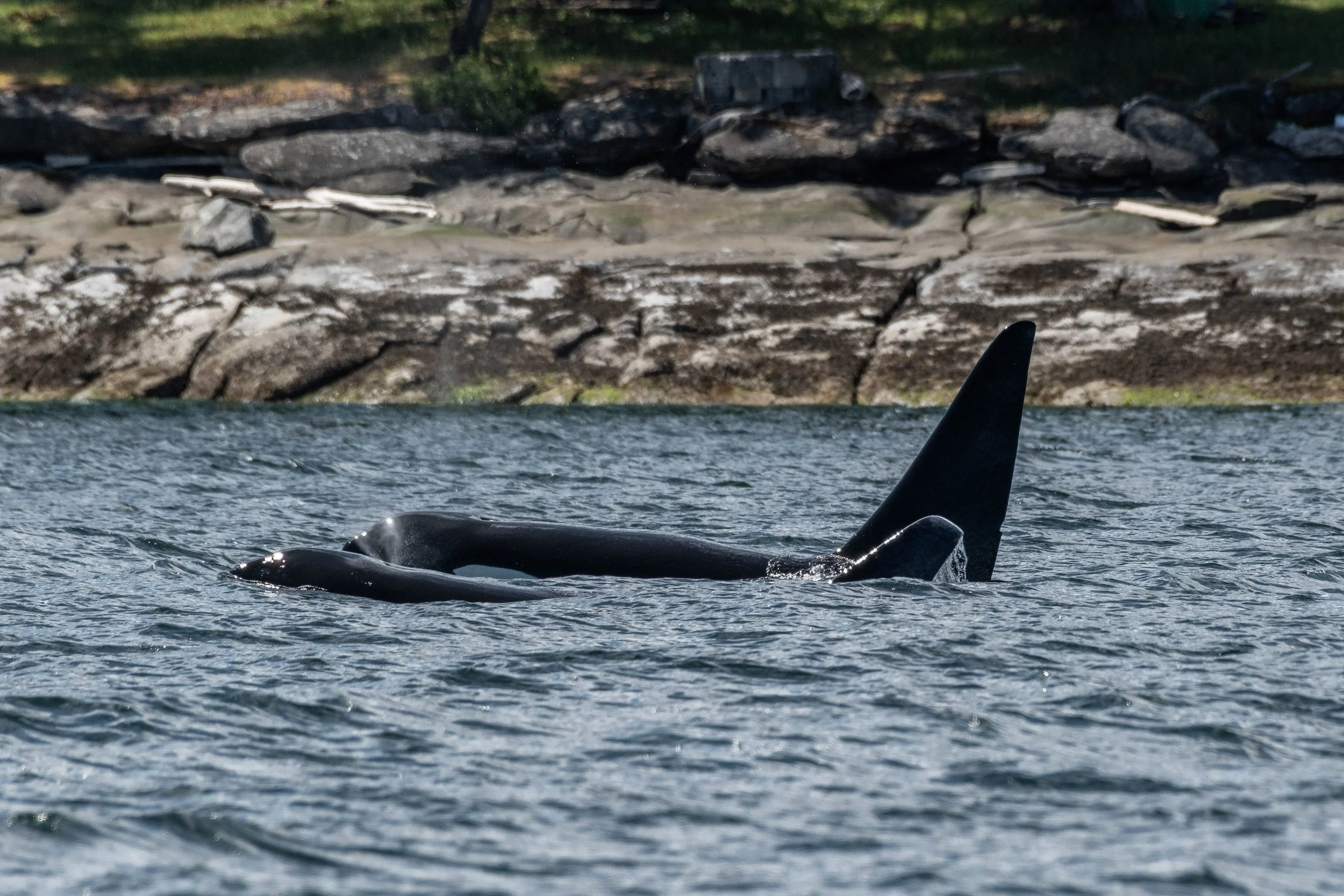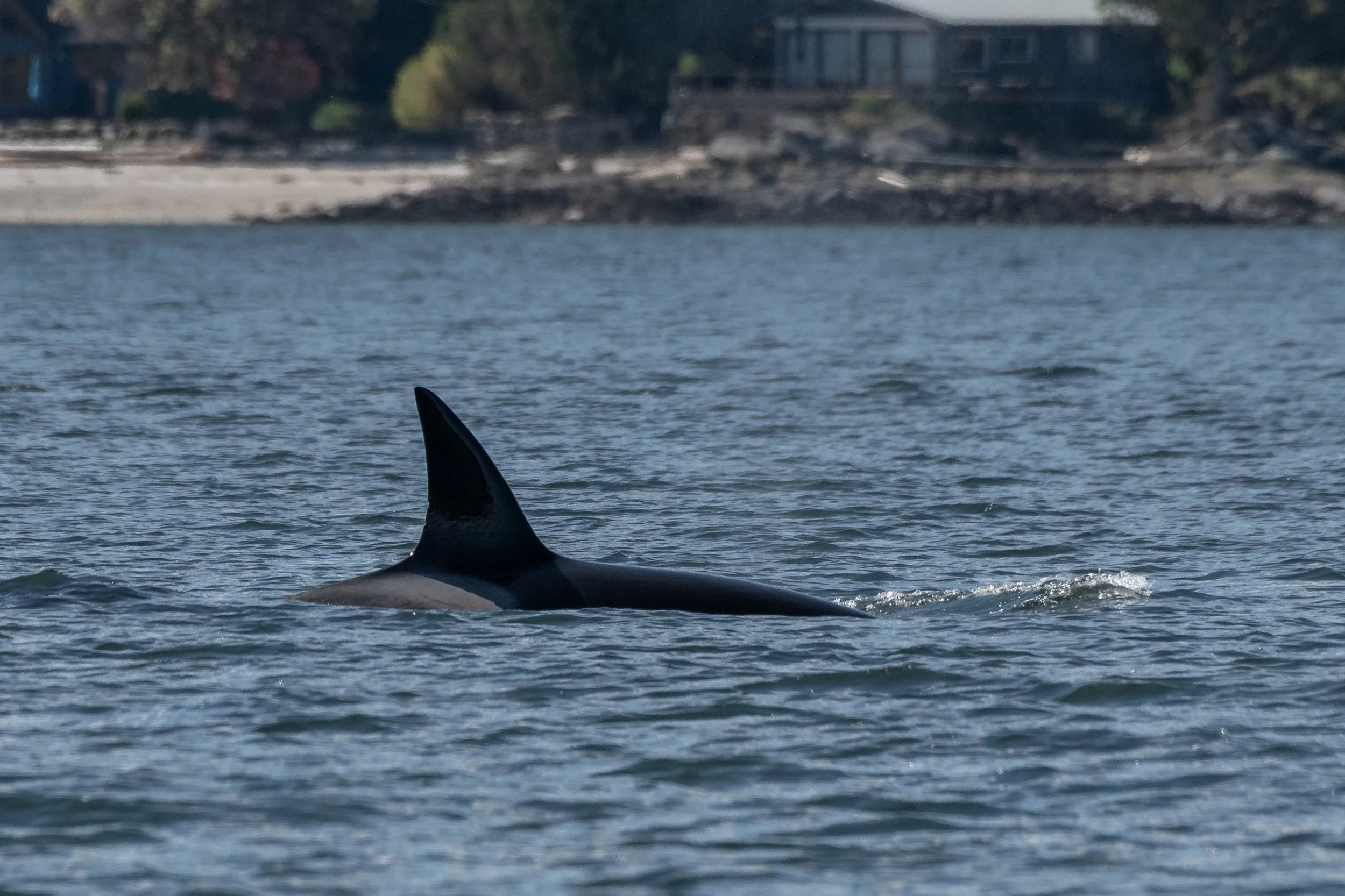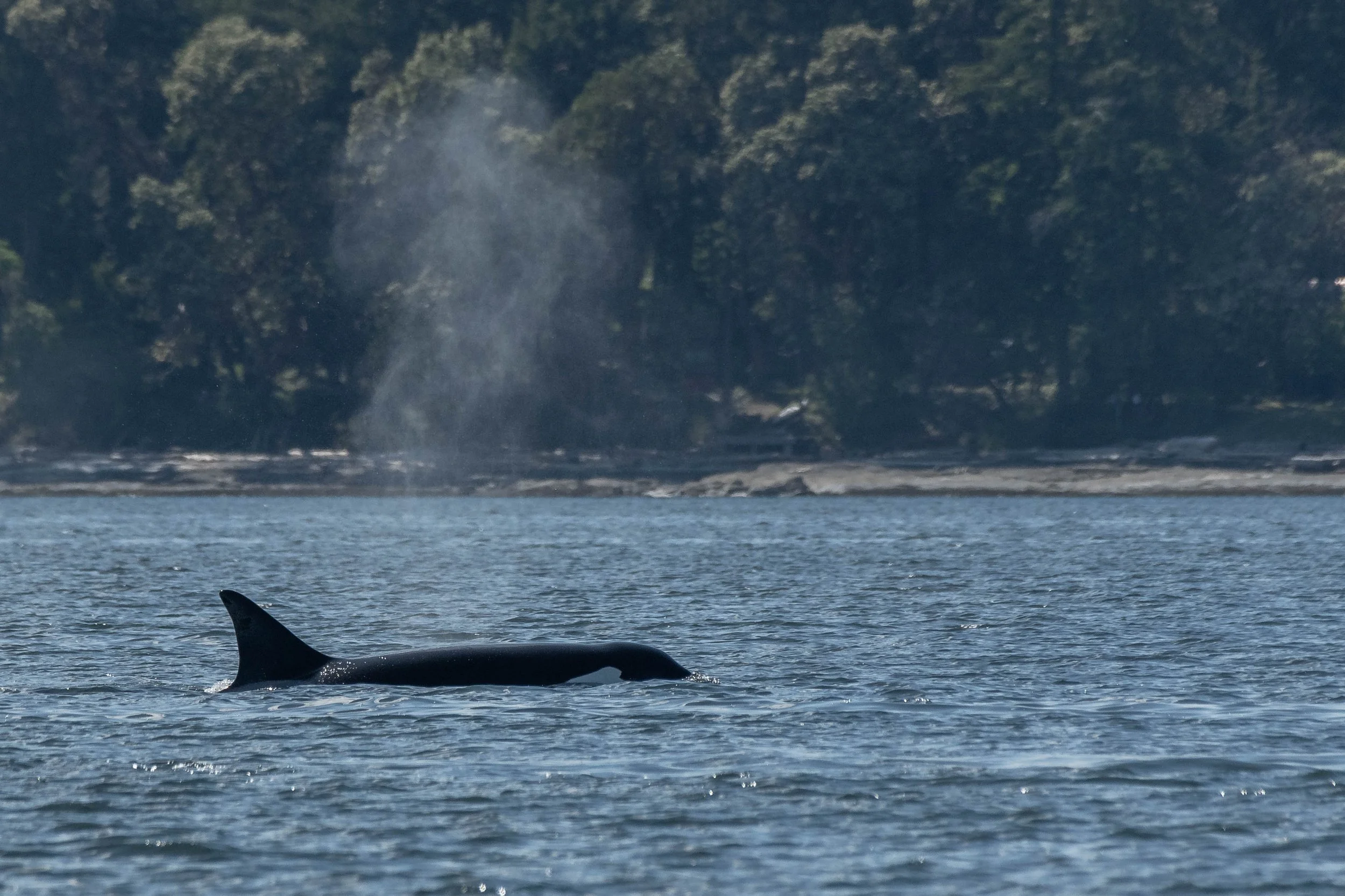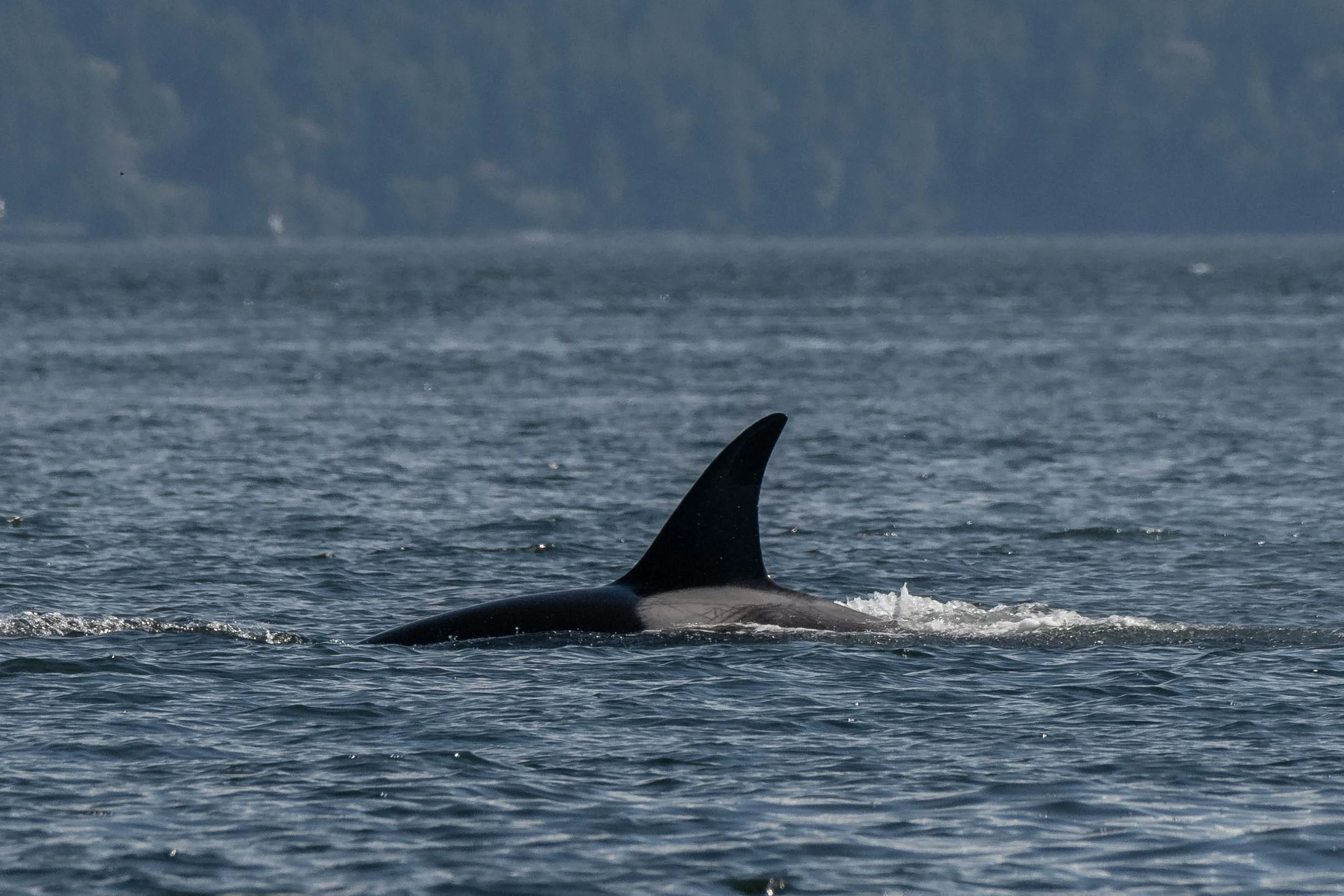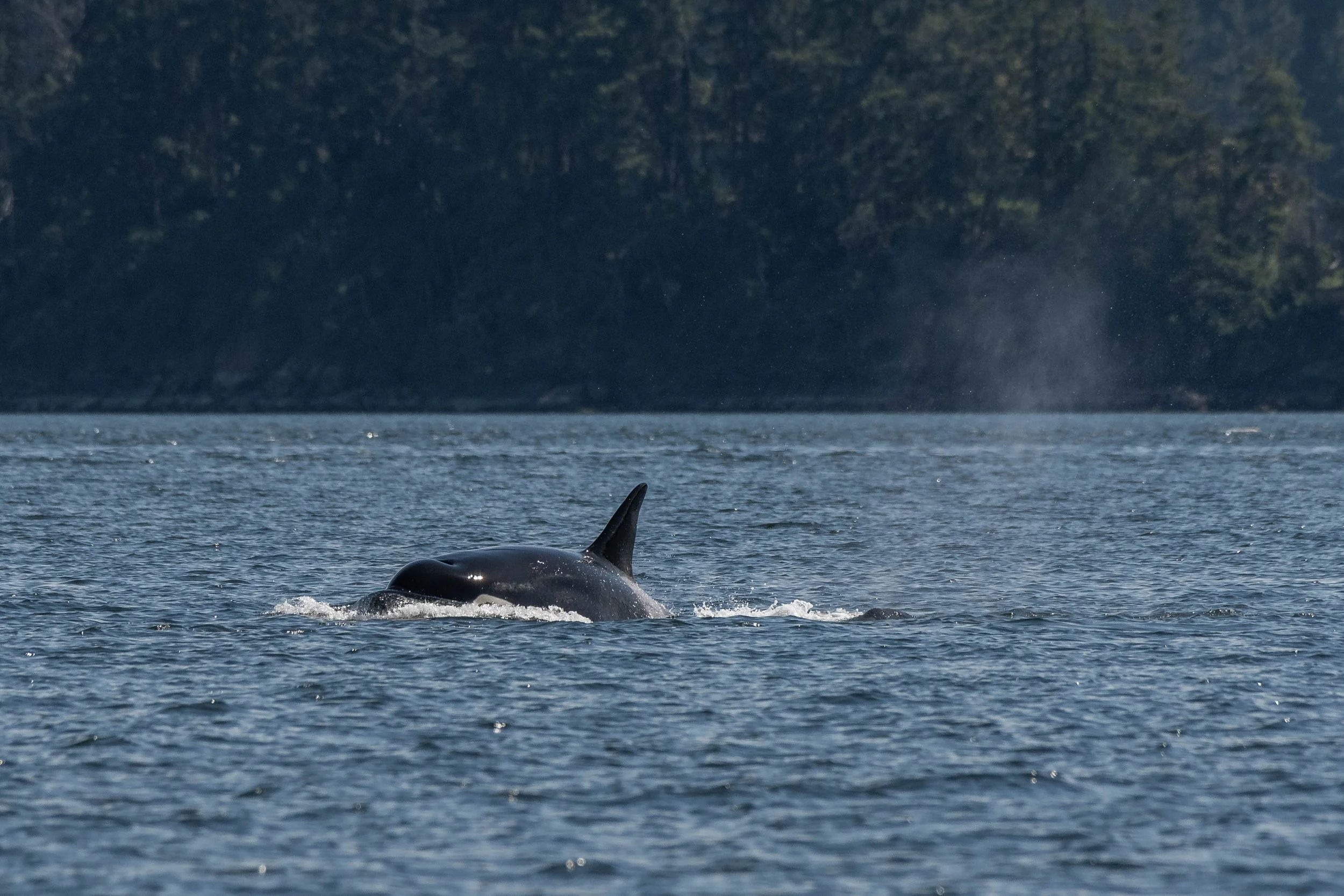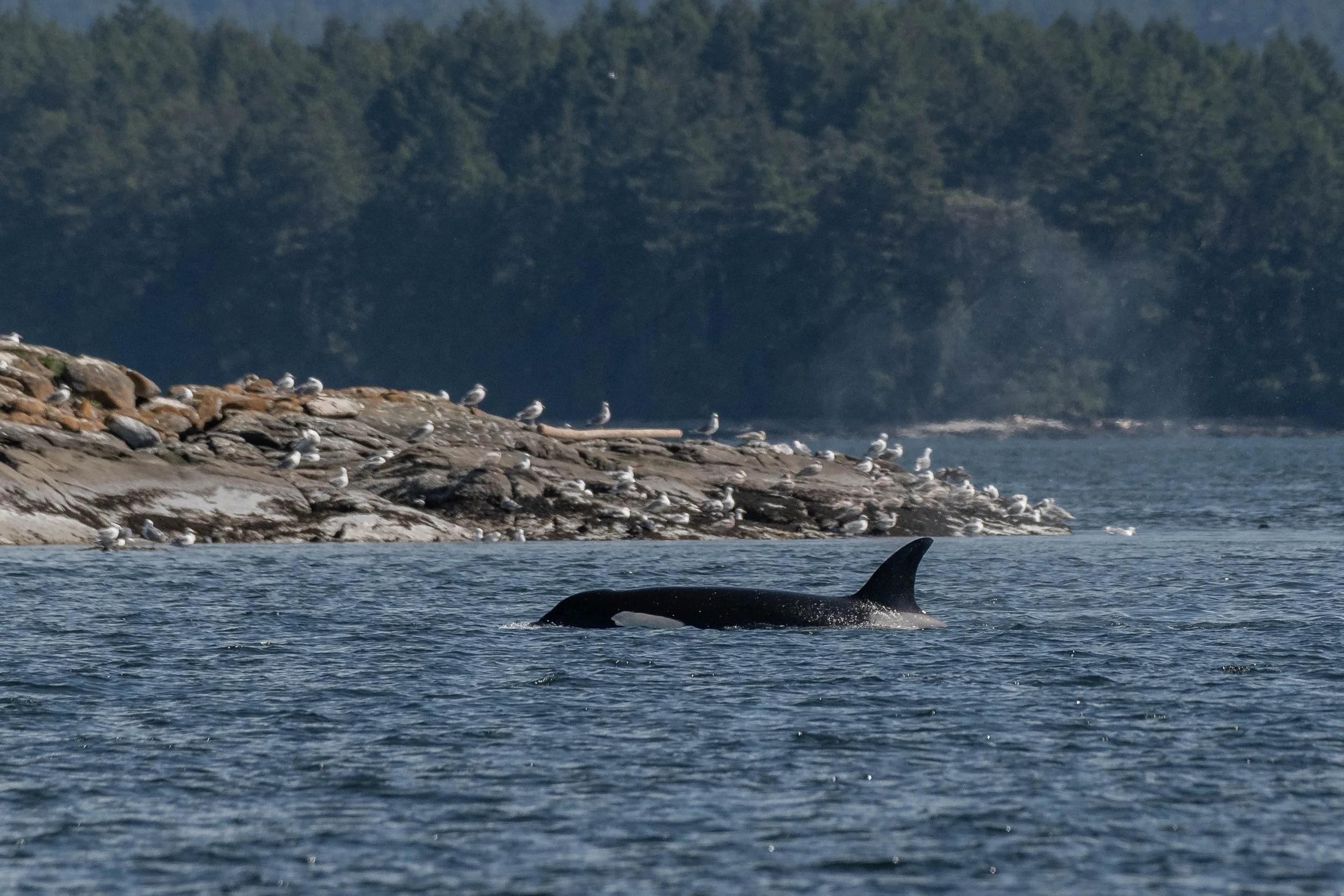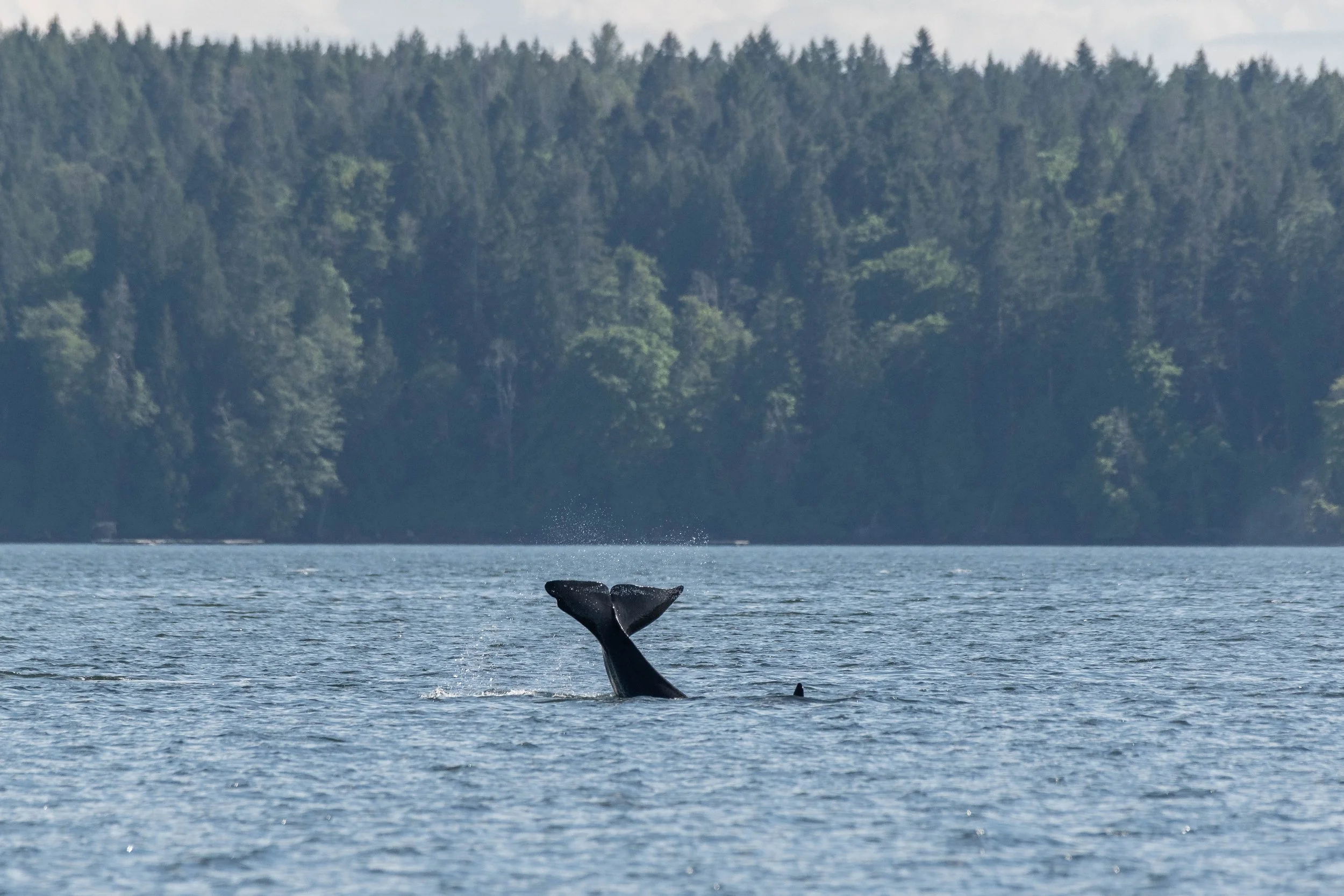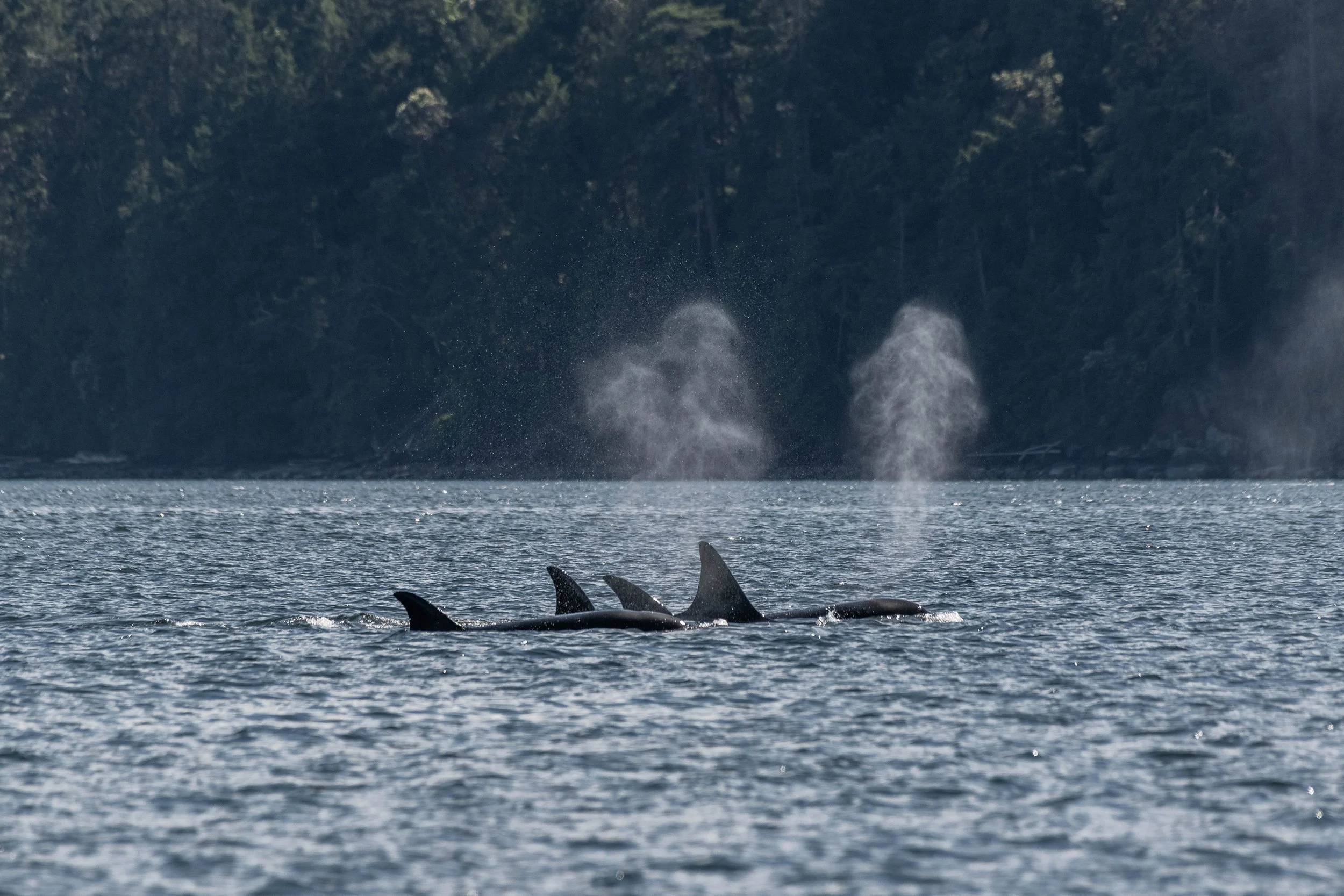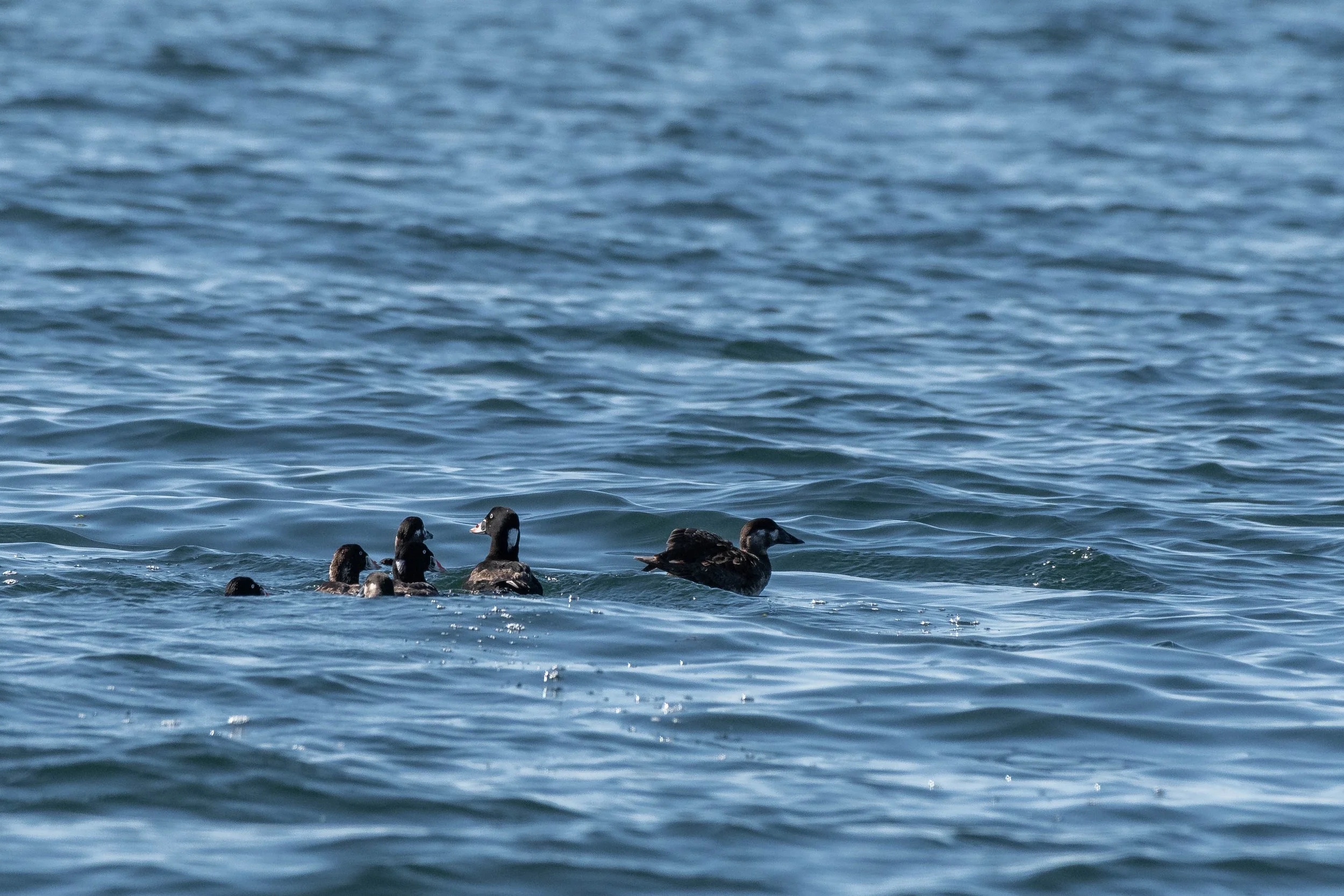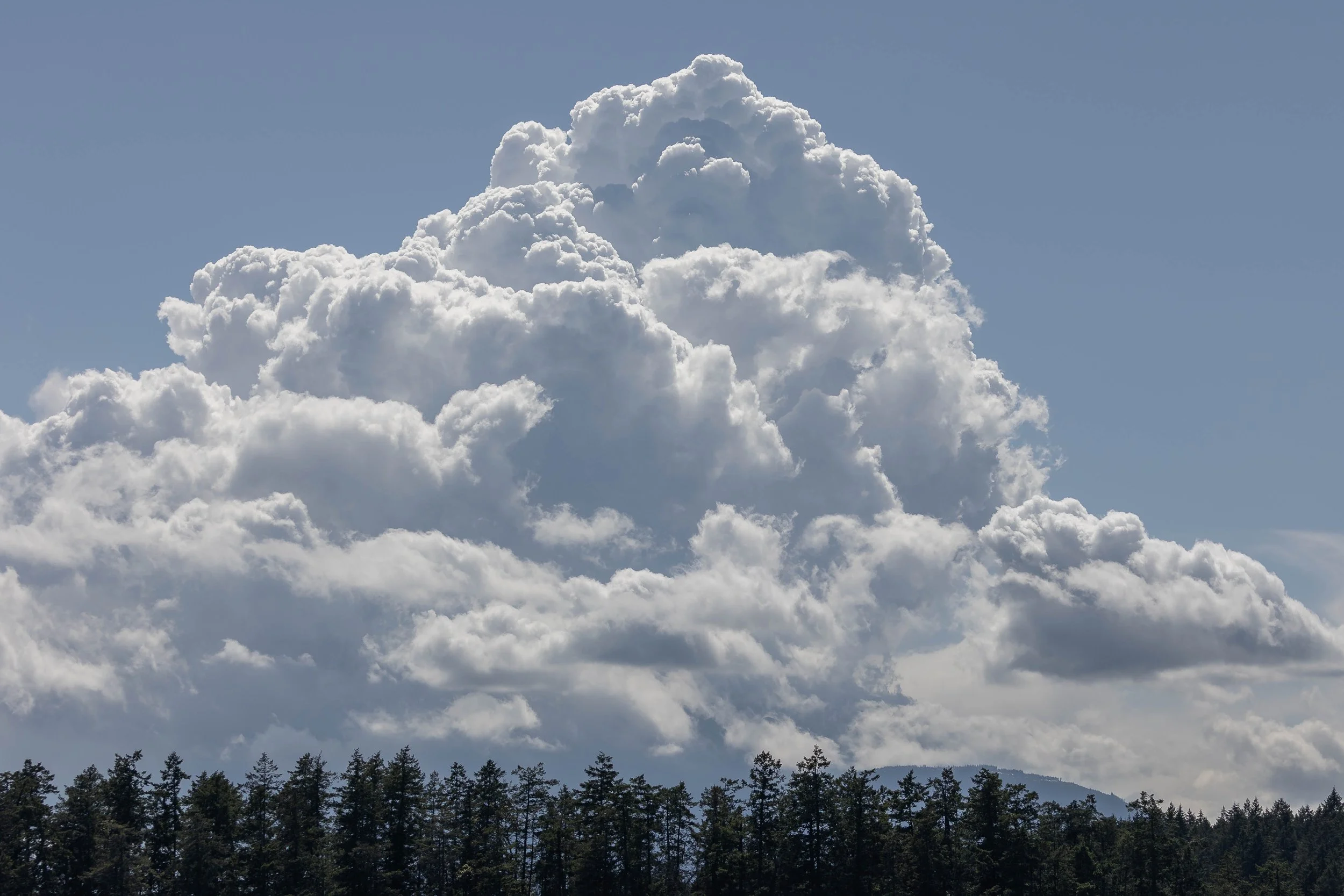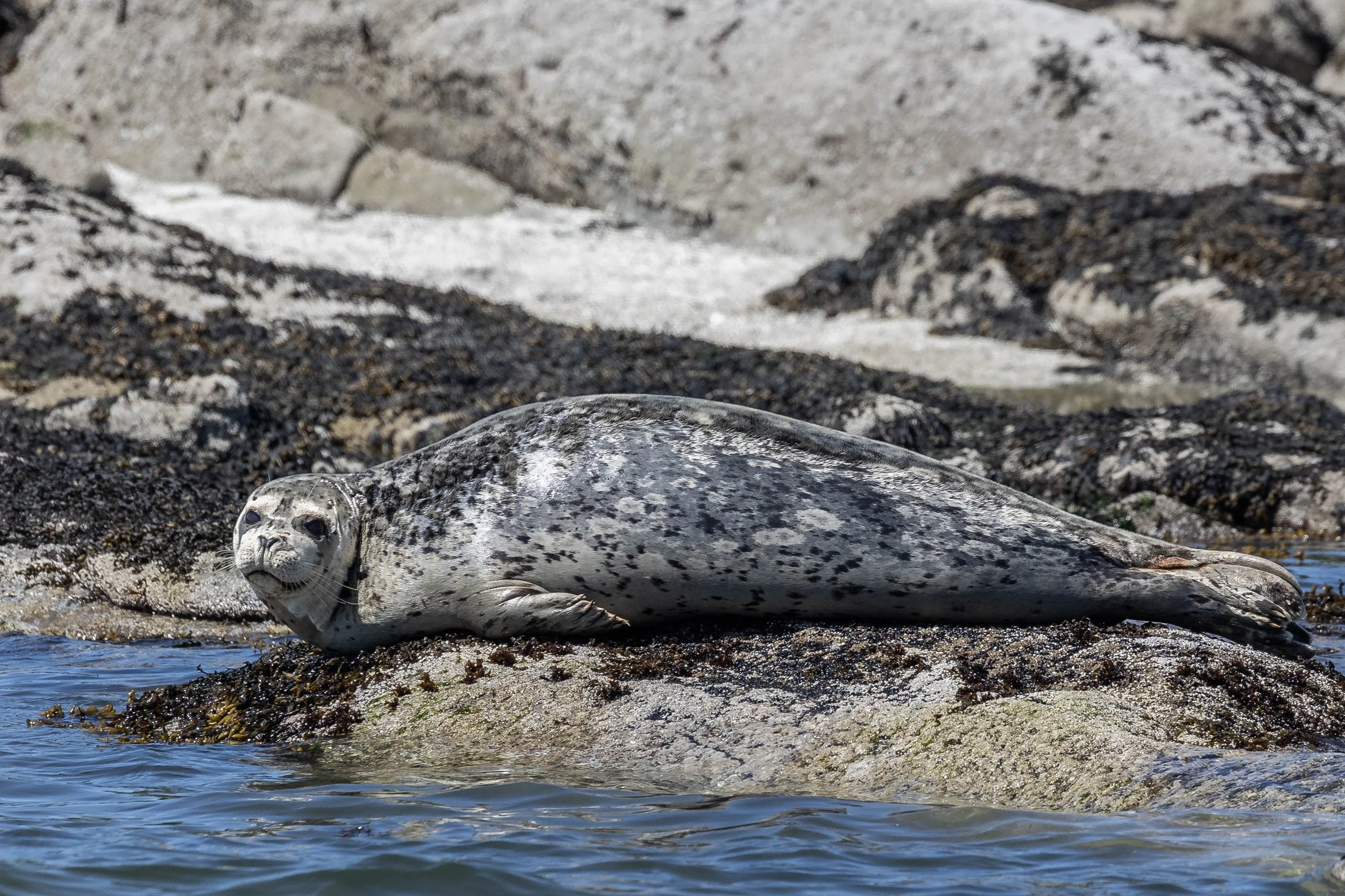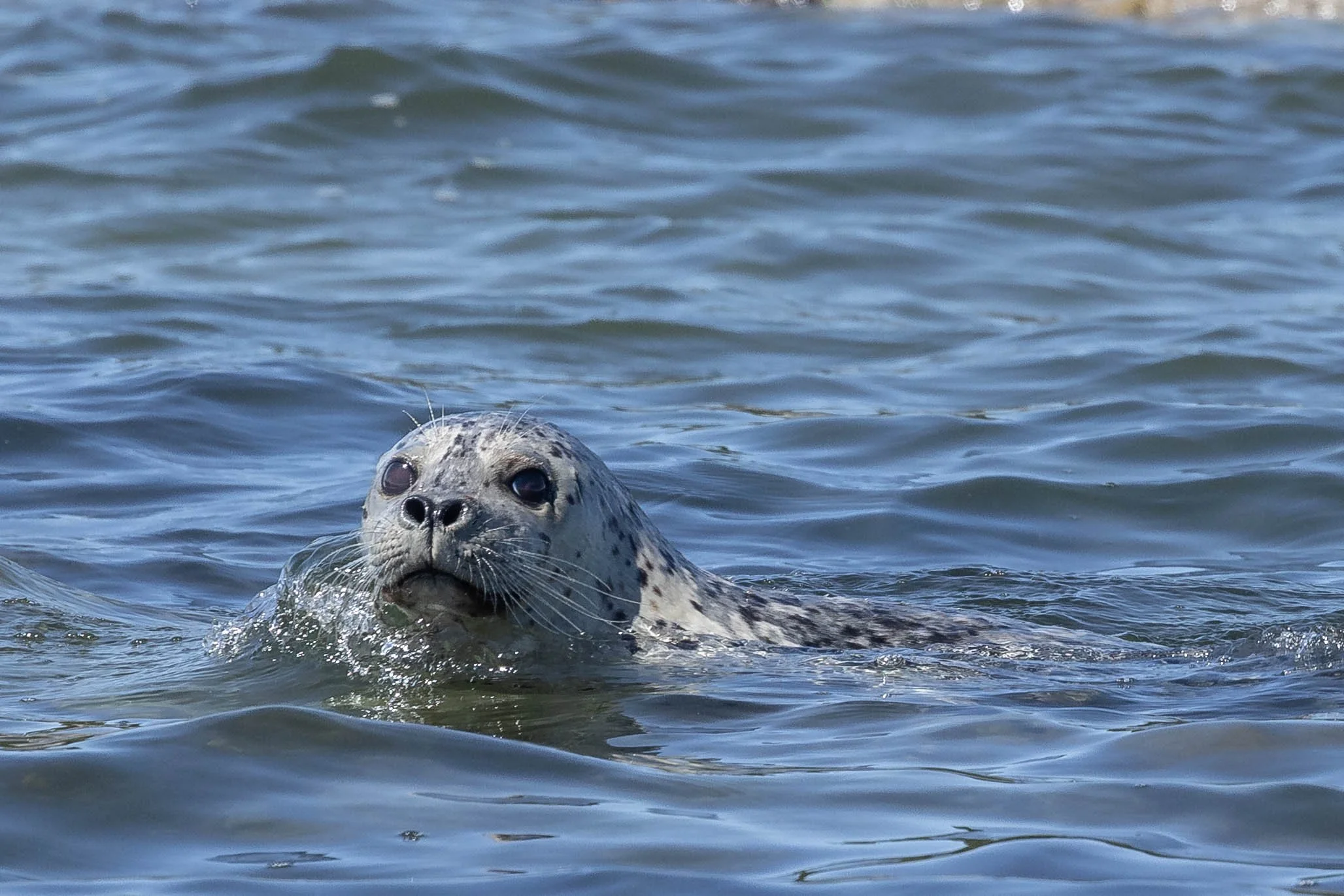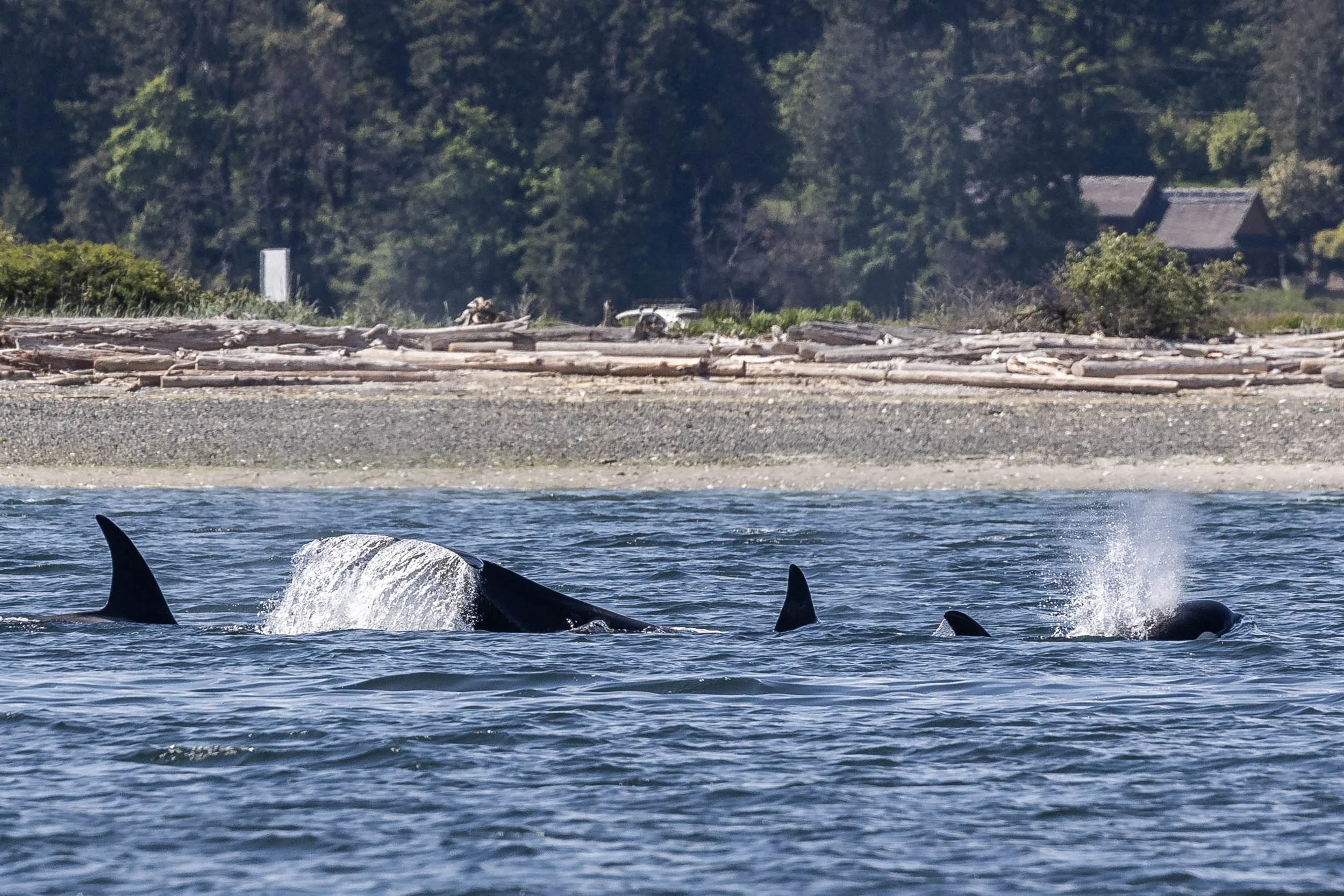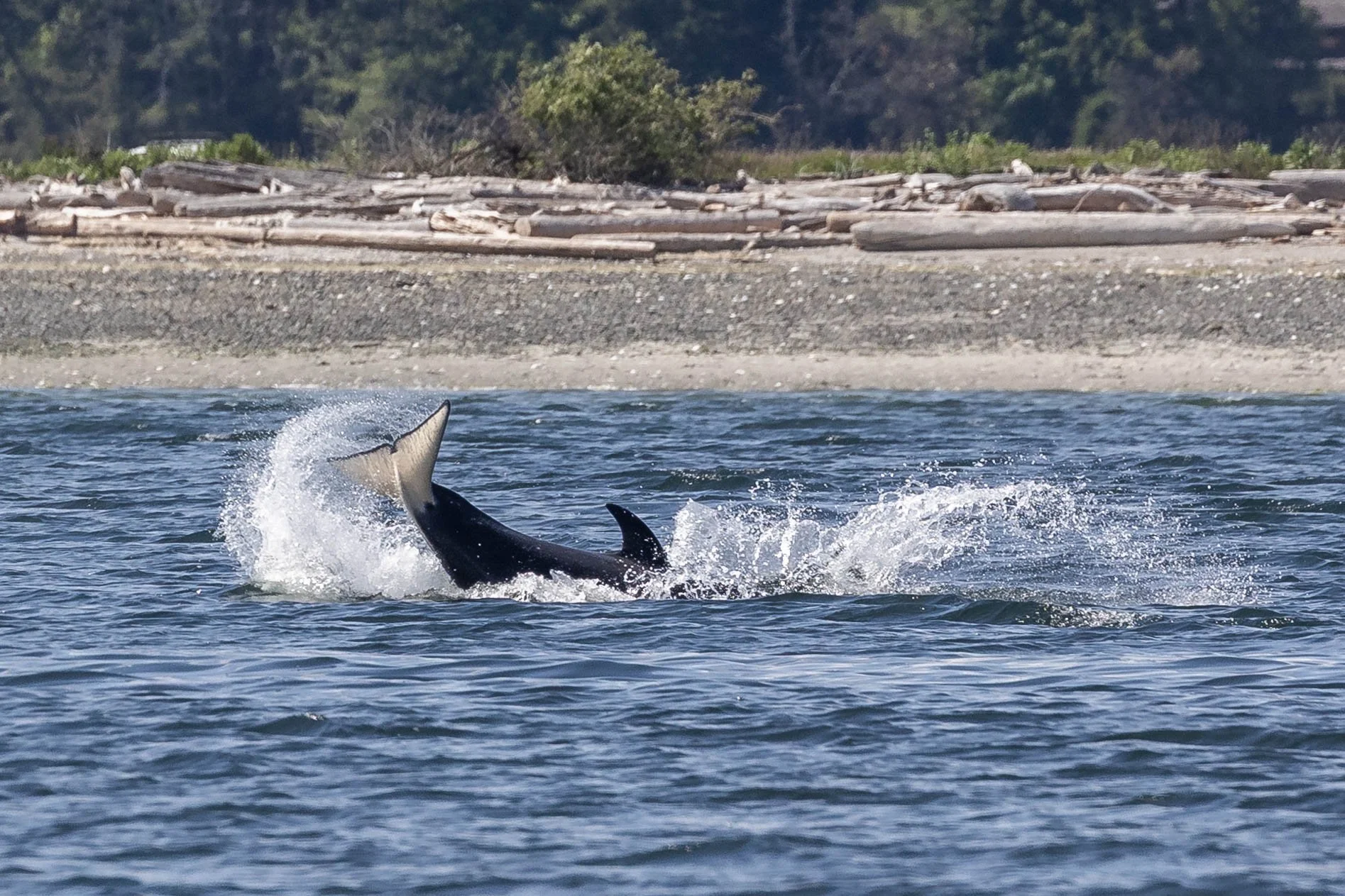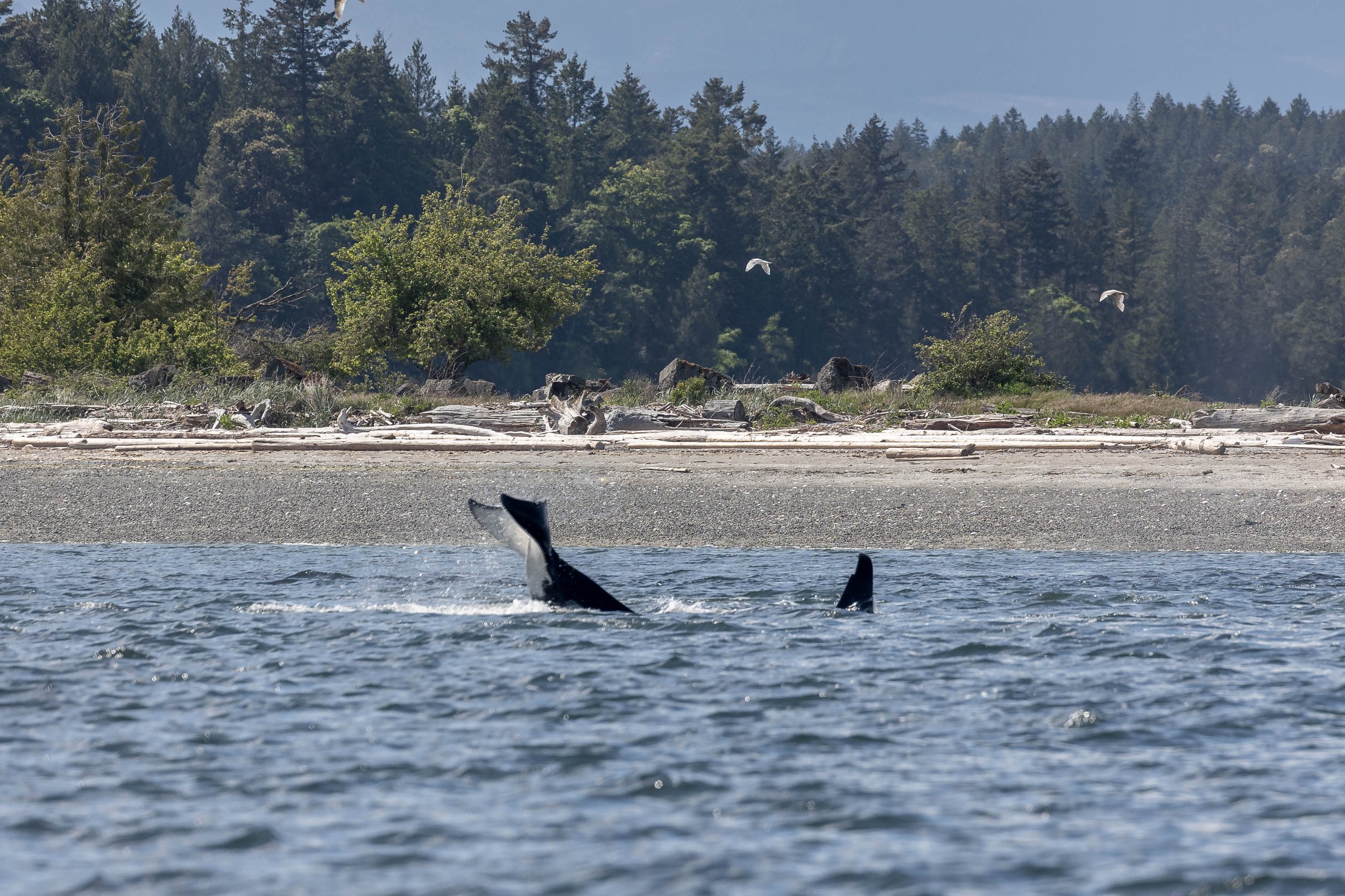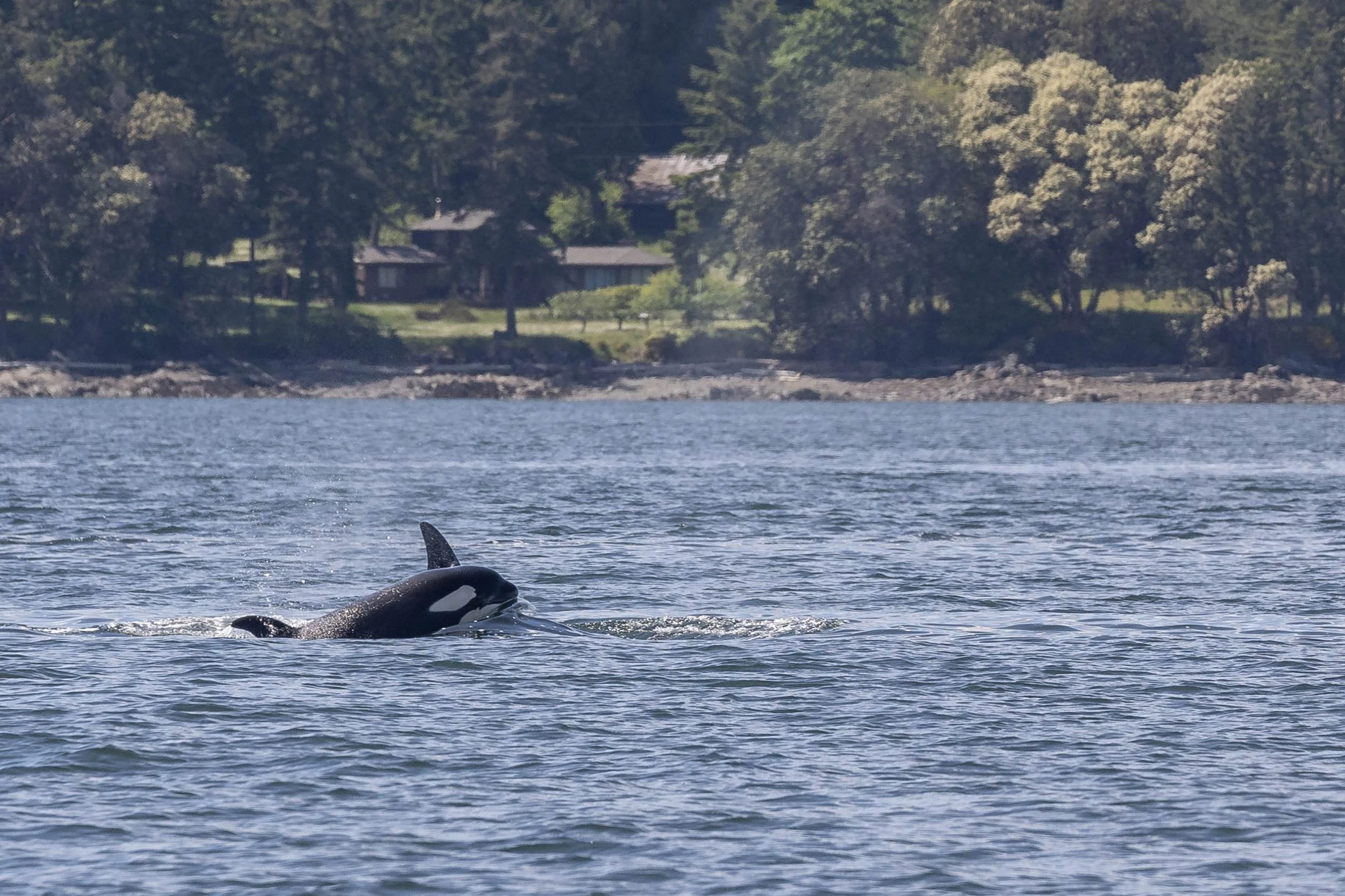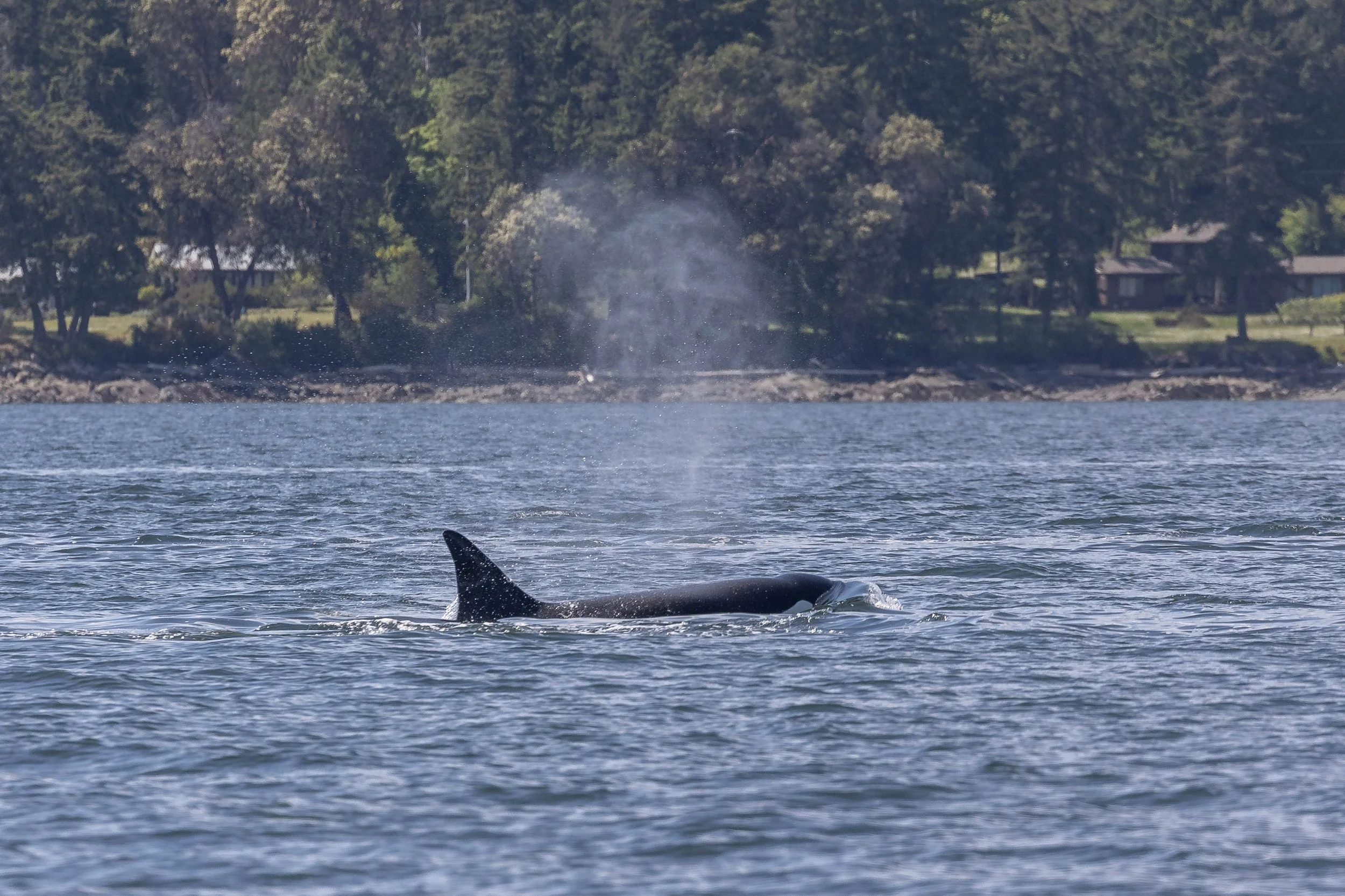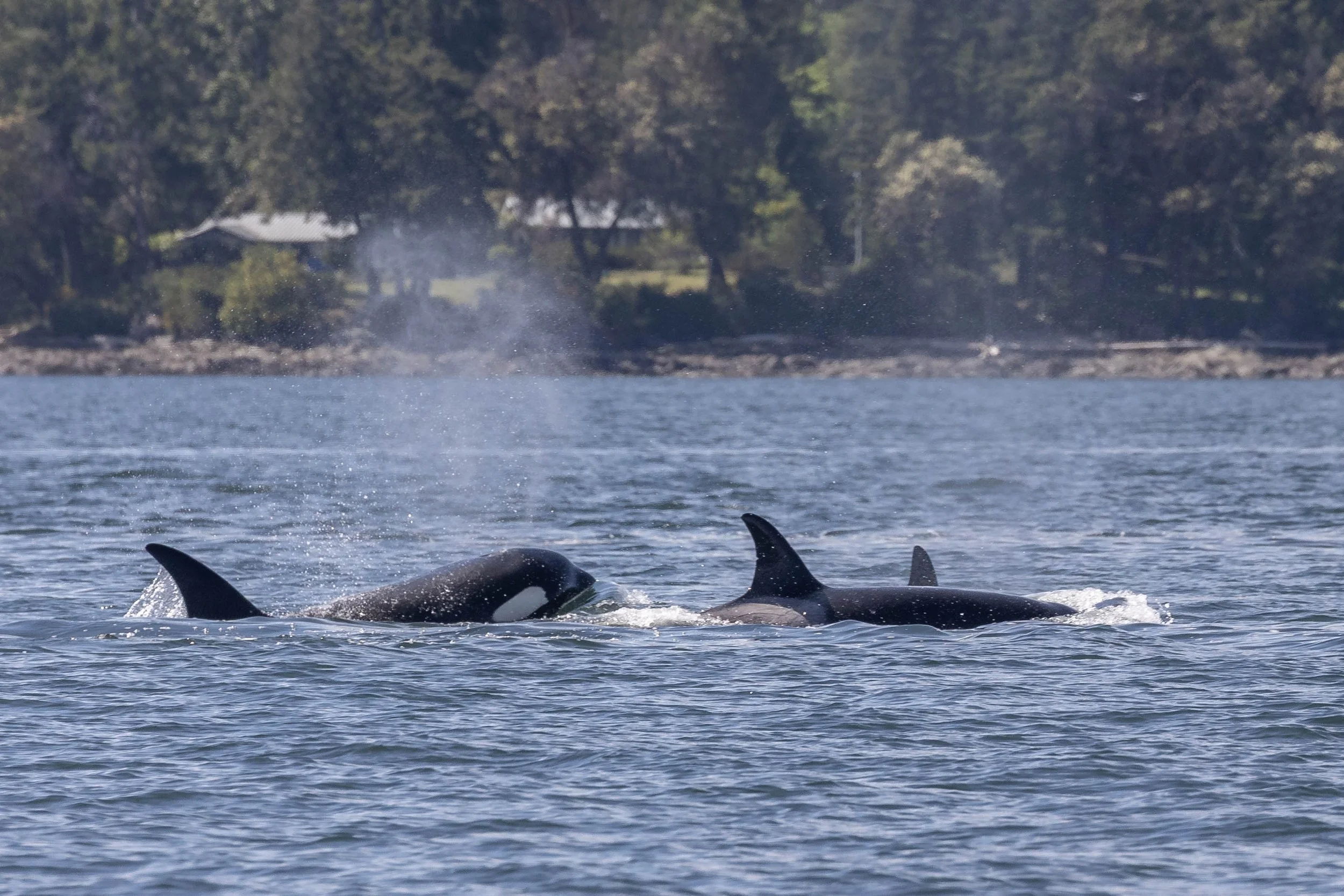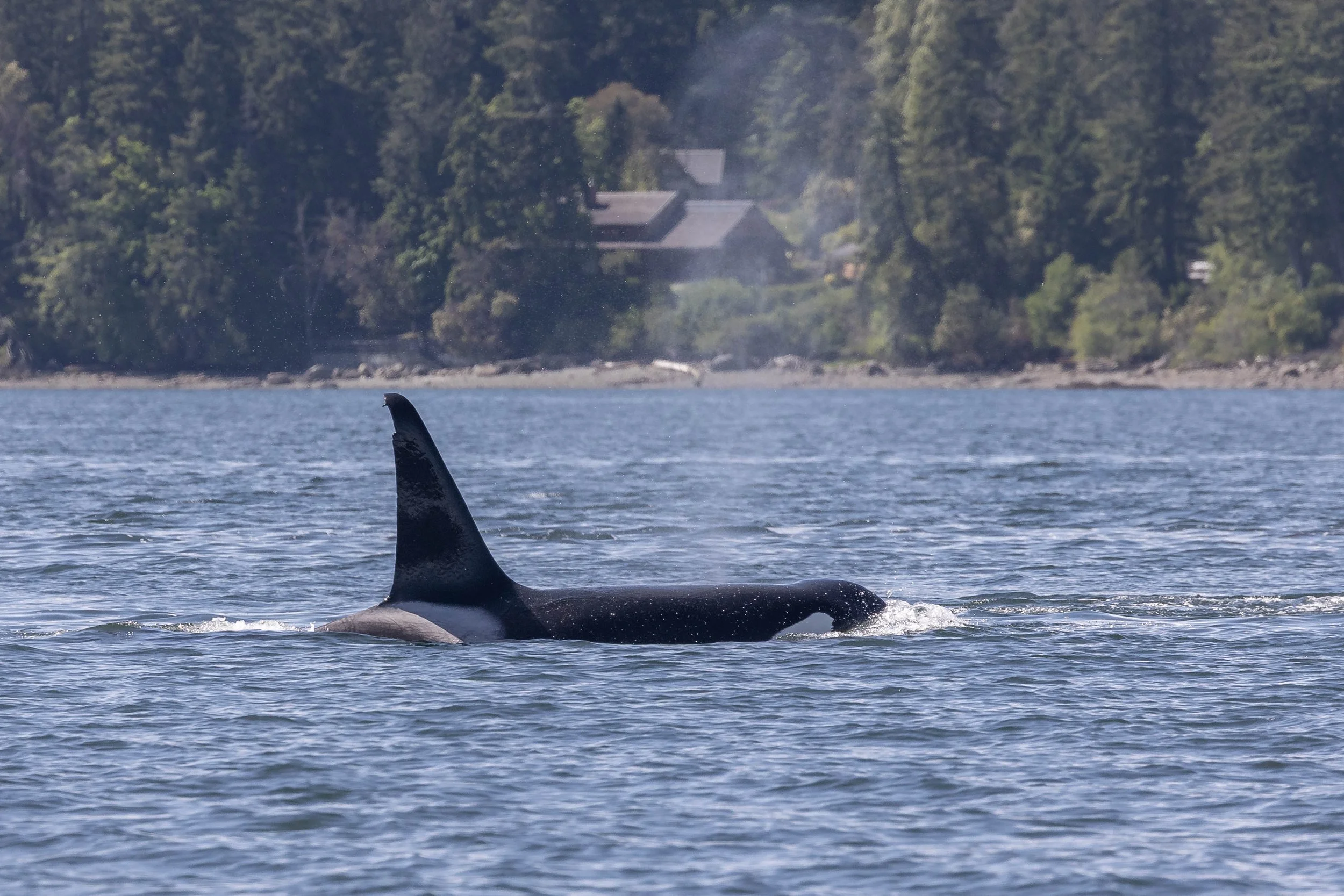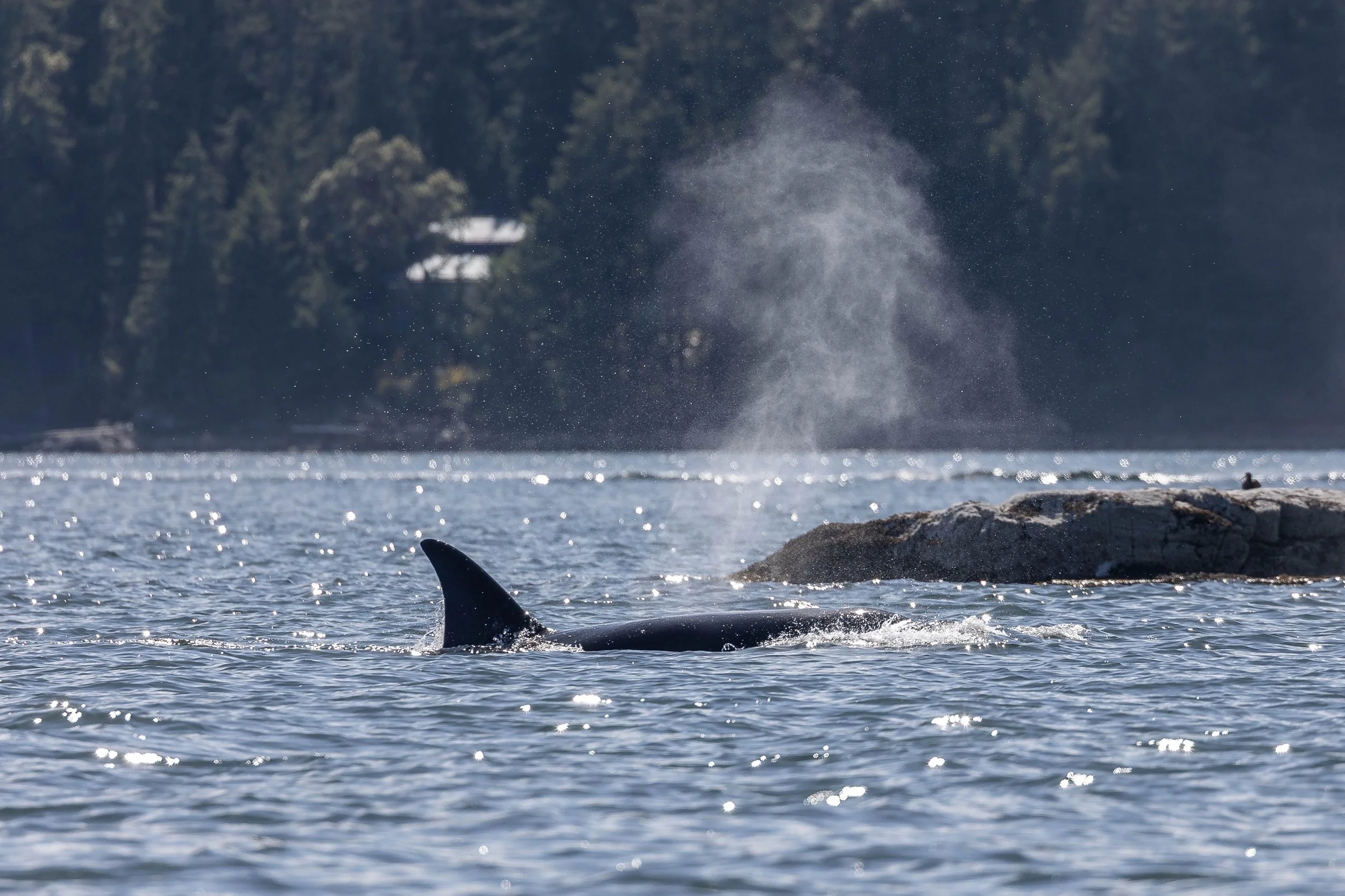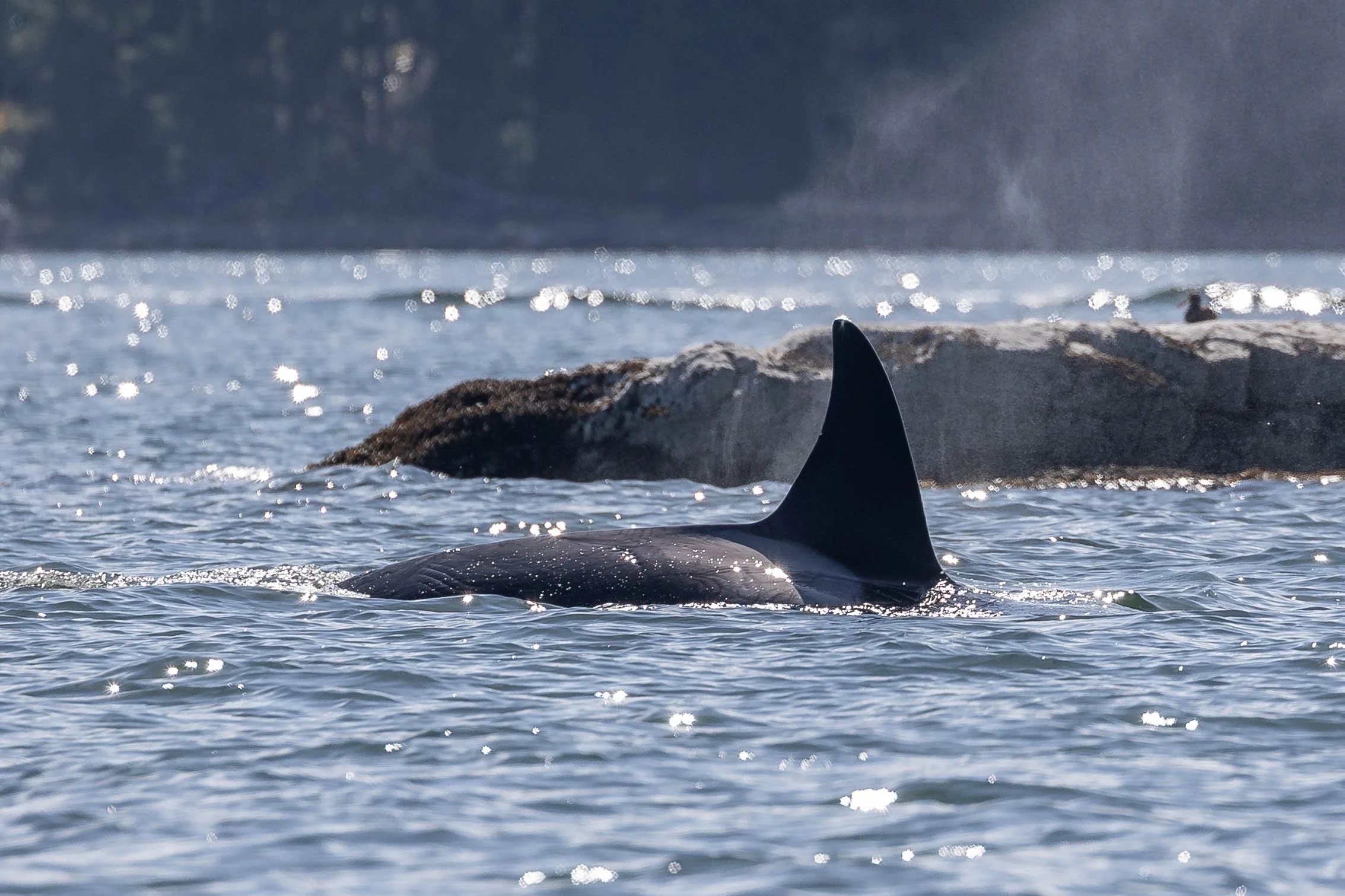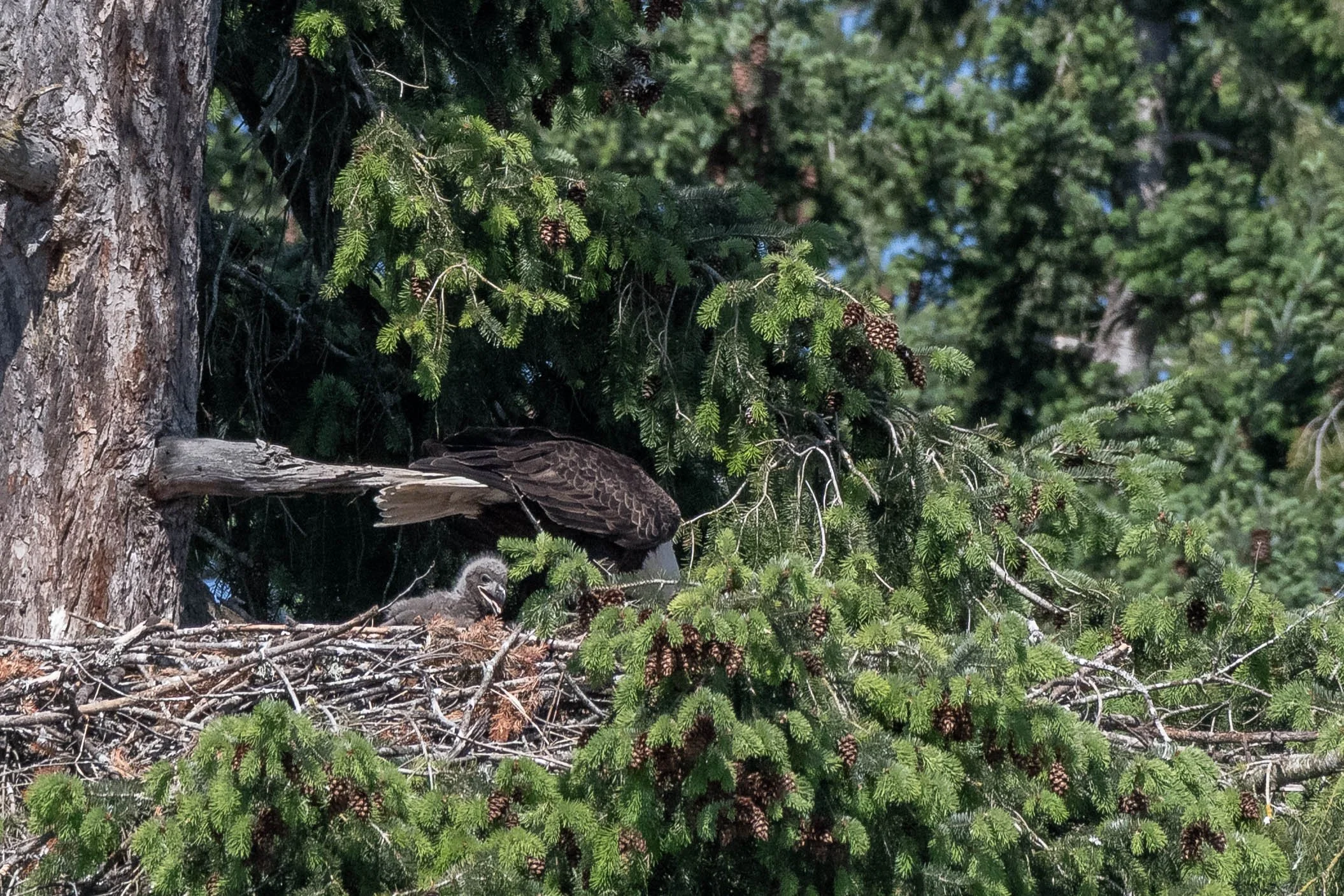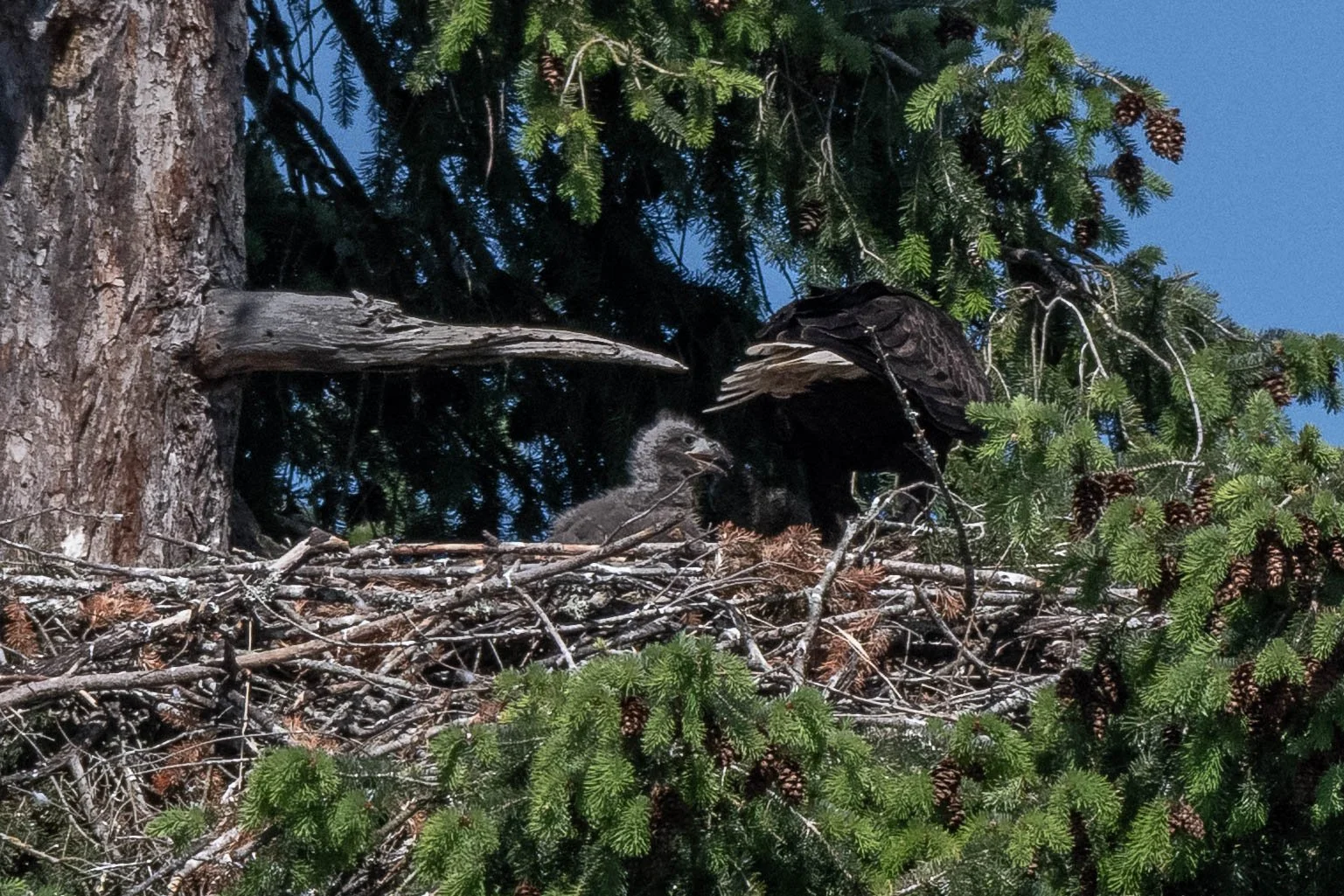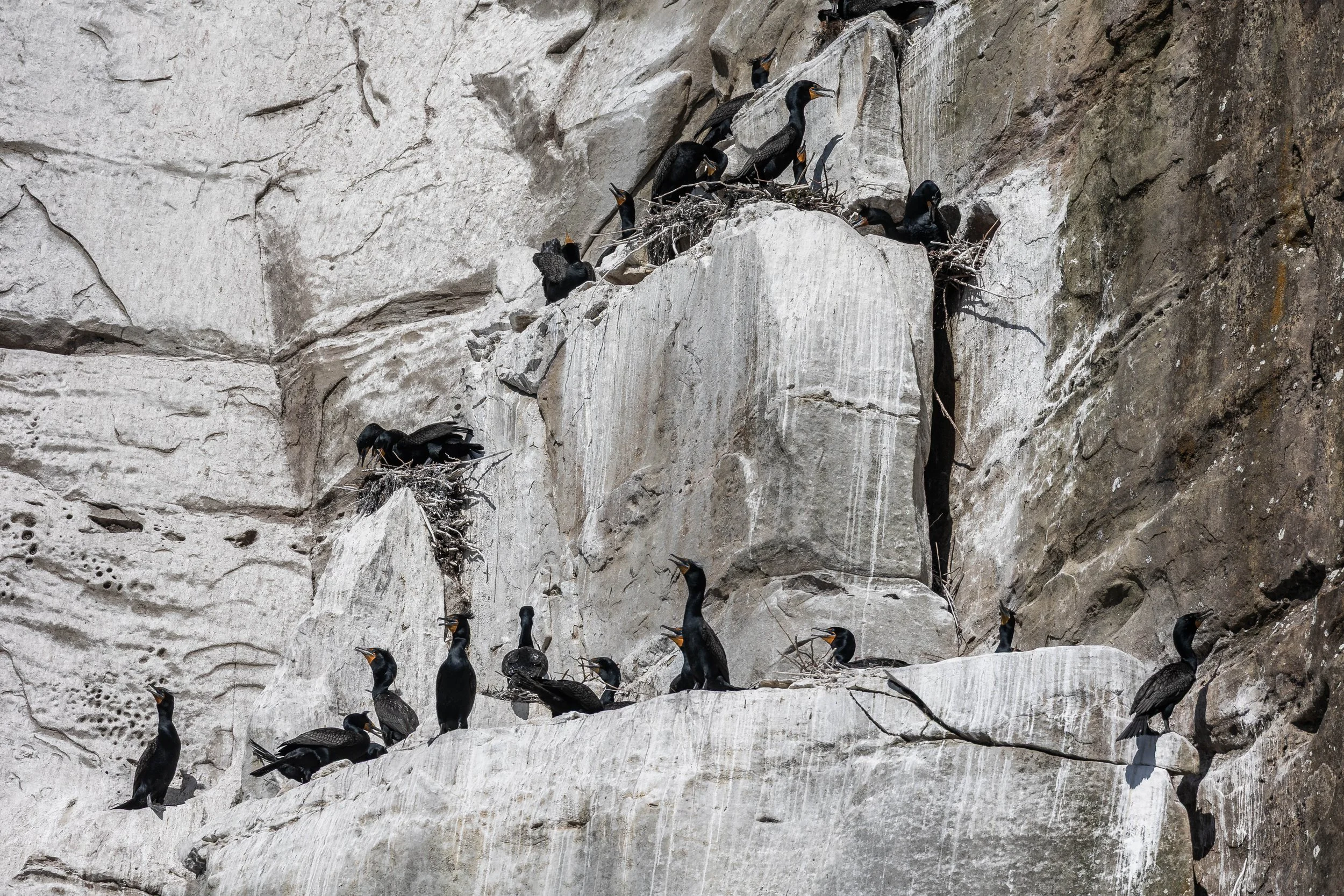May 12, 2025 - Double Orca Adventures!
One of the best parts of working with wild animals is that you never know what the day will bring. Whales are constantly on the move—an orca can cover around 100 miles in a single day. While this often means we’ll see one group of whales one day and then find them far away the next (sometimes replaced by a different group closer to us), that’s not always the case.
Lately, two whales have been breaking that pattern and spending their time in roughly the same areas. The two brothers, Noah and Jude, have been cruising the waters around Nanaimo for a while now, looping between here and Victoria. Today, it seemed to be time for the Nanaimo leg of their loop, as our boats spotted them just south of Dodd Narrows, travelling south through Stuart Channel.
T049A1 Noah ♂ (2001)
T049A2 Jude ♂ (2007)
The brothers were lazily surfacing side by side, their tall dorsal fins slicing through the calm water. Although they’re siblings, these two orcas look quite different, making them easy to tell apart—if you're lucky enough to spot them!
Noah is the larger of the two. He has a tall, straight dorsal fin with a single notch about a third of the way up from the base. To the untrained eye, he looks like a textbook example of a healthy orca, but he actually has a small spinal deformity: a bump between his head and dorsal fin. The cause is unknown, but theories include genetic factors or past injury.
His brother Jude is an even clearer example of physical variation. His dorsal fin has a pronounced lean, with the top portion bending over dramatically, succumbing to gravity. These impressive dorsal fins on male transient orcas can reach up to six feet tall. They’re not supported by bone, as one might assume, but by a dense web of connective tissue. It’s not just the dorsal fin that’s larger on males, proportionally; they also have bigger pectoral fins and tail flukes than females. Watching these two travel together and noting their similarities and differences is always a delight.
After spending time with the wayward brothers, we continued south through the channel in hopes of finding more orcas. Earlier that day, while watching Noah and Jude, we’d heard about a pod heading north through Sansum Narrows—so we set out to find them!
We spread out our boats and began the search. After a while, one of our new captains this season, Roy, spotted some blows in the distance! We headed that way and started snapping photos. It turned out to be a small T-party moving north through the islands.
T046C2 Sam ♀ (2009)
T046B1 Tread ♀ (2003)
T046B1A Tsakani ♀ (2015)
T046B1C ♂ (2022)
T087 Harbeson ♂ (~1962)
T124A2 Elkugu ♀ (2001)
T124A2A Agafia ♂ (2013)
T124A2B Litton ♀ (2016)
These whales appeared to be either socializing or finishing a hunt. It’s not always easy to tell the difference, as both behaviours can involve active surface movements. In this case, we believe they were hunting, since they were close to a known Harbour Seal haul-out site. Harbour seals are an essential part of the transient orcas’ diet. Although they’re the smallest prey species available, they’re also the most abundant—and they don’t fight back as fiercely as larger animals like sea lions.
We had a thrilling time watching the whales as they moved swiftly through the water, slapping their tails and even breaching! Eventually, though, we had to leave them behind and begin our journey back toward Nanaimo. But we had one more stop planned: the Gabriola Bluffs.
There are a few great sights to take in here. First, there's a bald eagle nest visible from the water—and today we got our first glimpse of this year’s eaglet! We're not sure yet if it's the only one, but time will tell. Last year, there was a single chick, while the year before, two eaglets successfully fledged from the nest. We’re excited to see what this year brings.
Then there are the bluffs themselves. Towering sandstone cliffs provide a stunning view, and they're also home to cormorants and other seabirds that use the cliffs as nesting sites.
Finally, we made our way back into Nanaimo. What an incredible day of wildlife sightings! Please enjoy the photos below, captured by our onboard Marine Naturalists, Aly Kohlman and Jordan Robinson.
Brothers T049A1 Noah with T049A2 Jude surfacing behind. Photo by Aly Kohlman.
Tail slapping good time! Photo by Aly Kohlman.
T046C2 Sam. Photo by Aly Kohlman.
T124A2 Elkugu. Photo by Aly Kohlman.
T124A2A Agafia. Photo by Aly Kohlman.
Charging ahead! Photo by Aly Kohlman.
T124A2 Elkugu. Photo by Aly Kohlman.
A breach! Photo by Aly Kohlman.
T124A42A Agafia with his unique tail. Photo by Aly Kohlman.
T124A2 Elkugu followed by T124A2A Agafia, T046B1 Tread and T124A2B Litton. Photo by Aly Kohlman.
T049A2 Jude and T049A1 Noah following. Photo by Jordan Robinson.
T049A1 Noah and T049A2 surfacing together. Photo by Jordan Robinson.
Surf scooters out for a swim. Photo by Aly Kohlman.
Very fluffy clouds! Photo by Jordan Robinson.
A harbour seal sunning on the rocks. Photo by Jordan Robinson.
This adorable harbour seal popped up to get a closer look at us. Photo by Jordan Robinson.
A gull on the rocks. Photo by Jordan Robinson.
Making a splash together! Photo by Jordan Robinson.
T124A2B Litton throwing water. Photo by Jordan Robinson.
T087 Harbeson giving us a tail slap, it’s a little out of focus but it’s the most active we have seen him be in a while! Photo by Jordan Robinson.
T124A2B Litton. Photo by Jordan Robinson.
T124A2 Elkugu. Photo by Jordan Robinson.
T124A42A Agafia following his sister T124A2B Litton while T124A2 Elkugu goes for a dive beside her. Photo by Jordan Robinson.
T087 Harbeson. Photo by Jordan Robinson.
A pic of the T-party! Photo by Jordan Robinson.
T124A2 Elkugu. Photo by Jordan Robinson.
T124A42A Agafia. Photo by Jordan Robinson.
A California Sea Lion on the logs, can you spot the tag? Photo by Aly Kohlman.
What a cute face! Photo by Aly Kohlman.
Kula our semi-covered vessel. Photo by Jordan Robinson.
Clyde, one of the nesting bald eagles. Photo by Aly Kohlman.
New BABY alert! We have at least one eaglet. Photo by Aly Kohlman.
So fuzzy! Photo by Aly Kohlman.
A little closer look. Photo by Aly Kohlman.
Cormorants in their nests. Photo by Jordan Robinson.
So many cormorants at the Gabriola Bluffs. Photo by Jordan Robinson.
The Gabriola Bluffs looking gorgeous in the sun. Photo by Jordan Robinson.

